The #2 pencil is a classic school supply, and we turned a box of our pencils into a pencil catapult. Who doesn’t love a catapult? There are so many great learning opportunities that a catapult can bring to the table from engineering design to math to science and of course fun! What you launch is up to you!

Setting Up STEM Projects For Kids
Calling all junior scientists, engineers, explorers, inventors, and the like to dive into a simple engineering project for kids. We love STEM activities you can really do, and that really work!
Whether you are tackling STEM in the classroom, with small groups, or in your own home, our easy STEM projects projects are the perfect way for kids to find out how fun STEM can be. But what is STEM?
The simple answer is to break down the acronym! STEM is really science, technology, engineering, and math. A good STEM project will intertwine two or more of these concepts to complete the project or to solve a problem.
Almost every good science or engineering project is really a STEM project because you have to pull from different resources to complete it! Results happen when many different factors fall into place. Technology and math are also important to work into the framework of STEM whether it’s through research or measurements.
It’s important that kids can navigate the technology and engineering portions of STEM needed for a successful future, but that’s not limited to building expensive robots or being stuck on screens for hours. Instead have fun with hands-on building activities like this pencil catapult below!
How To Make A Pencil Catapult
Of course, there are lots of other ways to make a catapult. Check out more catapult design ideas further below.
TIP: You may need an extra hand to help when it comes to holding the pencils and twisting the rubber bands. However, there are also tons of ways you can build one that’s unique to you!
Supplies:
- Rubber Bands
- Number 2 Pencils
Instructions:
Below you will see some photographs outlining the order in which we put the pencil catapult together.
STEP 1: First Picture Below, Build the Main Unit
First, you want to attach two pencils to the middle of one pencil as show below {perpendicular}. This will act as the lever arm/launcher.
Second, you want to attach that single pencil {with the two attached pencils} about a 1/3 of the way down two pencils {that are parallel to each other} for the frame. Check below.
Third, slip a rubber band onto the frame as shown below. Remember this is the tension that will affect the launch!
Fourth, add a pencil to the bottom and to the top to complete the square shape. Note that the top pencil is resting on top of the two pencils in the center
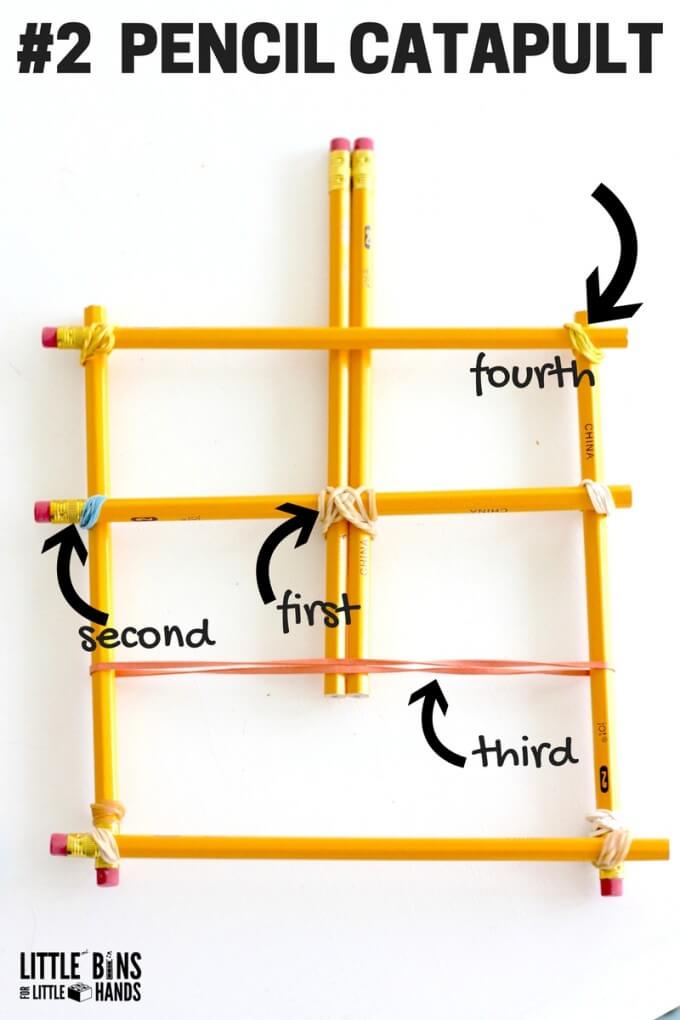
STEP 2: Build a Base
Your pencil catapult needs a sturdy base! Once you have the main frame built, you need to make a base for it.
Next, we added three pencils around the bottom connecting to the main unit and creating a square on the bottom. Check out the photo below.
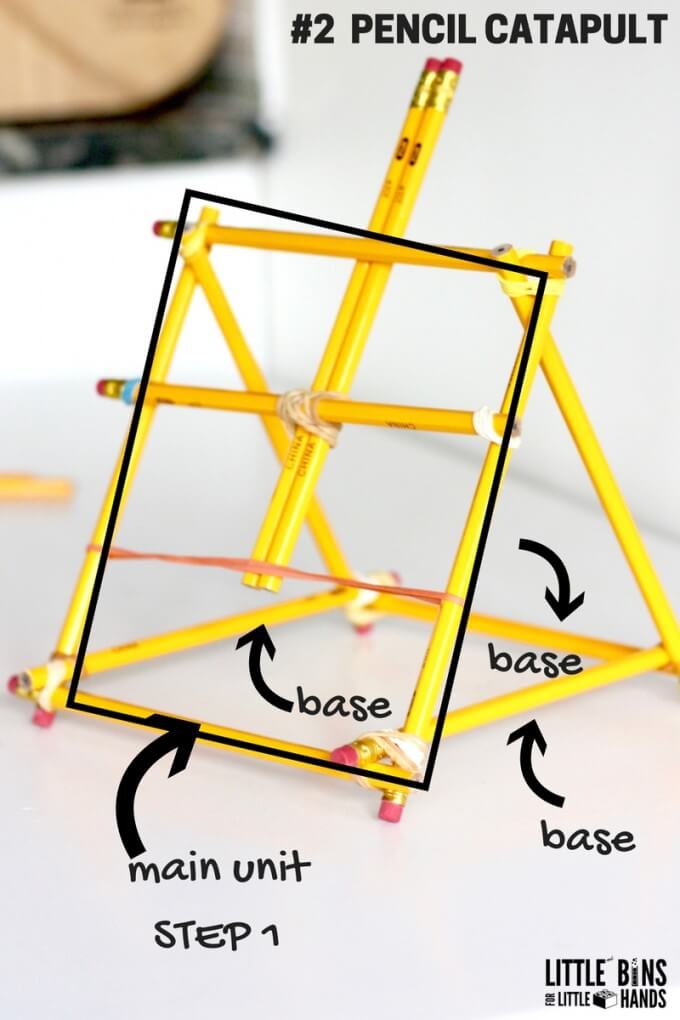
STEP 3: Add the Sides
Finally, you need to add one pencil diagonally to each side, creating a triangle shape on each side. This will keep your pencil catapult upright and ready to launch.
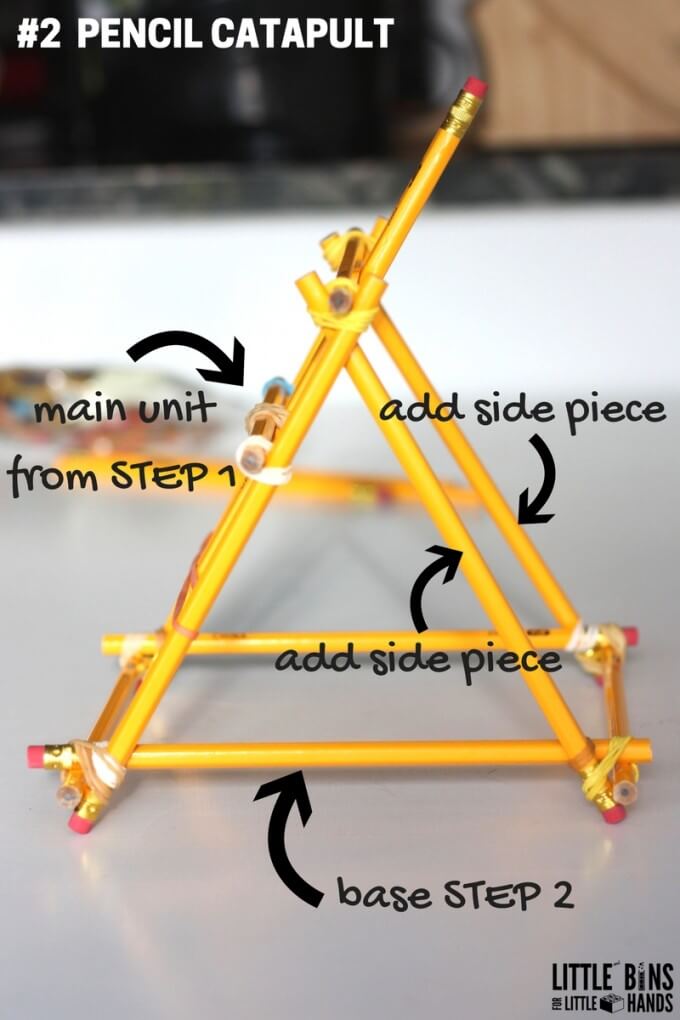
Your pencil catapult is complete! What will you launch?
Different materials will launch farther than others. Why is that? Set up an experiment and find out. Since we are using school supplies, we decided on eraser pencil toppers to launch! Quite fun actually!
In addition to simple fun, our catapult dabbles in physics and mathematics too. How does a lever arm work? Is there both potential and kinetic energy?
Whether you use our design or invent your own, this catapult STEM project is the perfect boredom buster. Above all, have fun!

How Does A Catapult Work?
This is a great simple physics activity for kids of multiple ages. What is there to explore that has to do with physics? Let’s start with energy including elastic potential energy. You can also learn about projectile motion.
Newton’s 3 Laws of Motion state that an object at rest stays at rest until a force is applied, and an object stays in motion until something creates an imbalance. Every action causes a reaction.
When you pull down the lever arm all that potential energy gets stored up! Release it and that potential energy gradually changes over to kinetic energy. Gravity also does its part as it pulls the object back down to the ground.
Learn more about potential and kinetic energy.
You can talk about stored energy or potential elastic energy as you pull back on the spoon, bending it. When you release the spoon, all that potential energy is released into energy in motion producing the projectile motion.
A catapult is a simple machine that has been around for ages. Have your kids dig up a little history and research when the first catapults were invented and used! Hint; check out the 17th century!
TIP: Check out more fun simple machine projects and grab the simple machine worksheets!
STEM Resources To Get You Started
Here are a few resources that will help you introduce STEM more effectively to your kiddos or students and feel confident yourself when presenting materials. You’ll find helpful free printables throughout.
- Engineering Design Process Explained
- What Is An Engineer?
- Engineering Words
- Real World STEM
- Questions for Reflection (get them talking about it!)
- BEST STEM Books for Kids
- 14 Engineering Books for Kids
- Jr. Engineer Challenge Calendar (Free)
- Must Have STEM Supplies List
- Join us in the Club
Printable STEM Project Pack For Kids
80+ Doable Engineering Projects in one convenient pack!
- Full instructions with sample images
- Activity-specific instruction sheets
- Data Collection Sheets
- Questions for Reflection
- Architecture Building Cards: Try the tallest tower challenge
- Bridge Building Cards: Explore different types of bridges to build your own.
- Paper Chain STEM Challenge: Who can make the longest chain? Great icebreaker or quick challenge!
- 3 Little Pigs Architectural Pack: Design a house that won’t blow away!
- Great marshmallow challenge: A classic challenge kids love!
- Real-world STEM challenge lesson but don’t know where to start? Our easy-to-follow template shows the steps!
- What’s the difference between a scientist and an engineer?
- Crossword and word search with engineering vocabulary.
- Engineering vocabulary cards
- Design a one-of-a-kind invention and write about it with this 5-page activity!



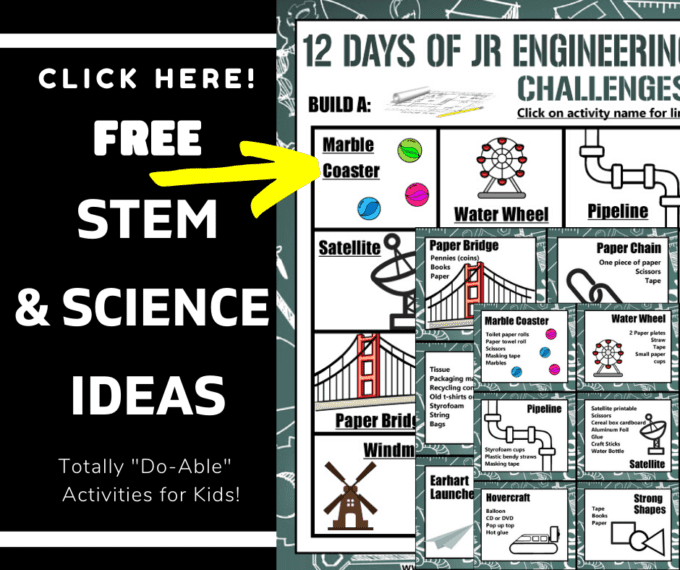
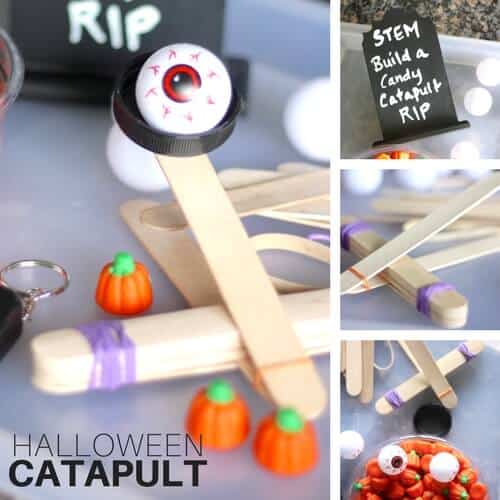
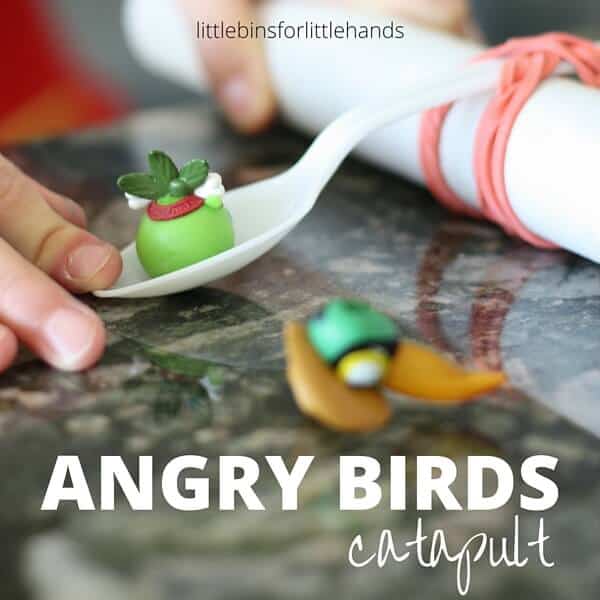
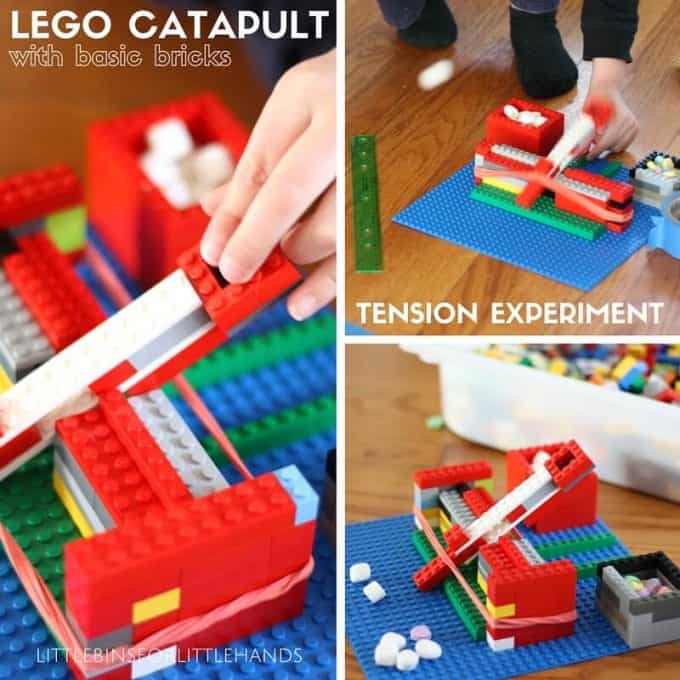

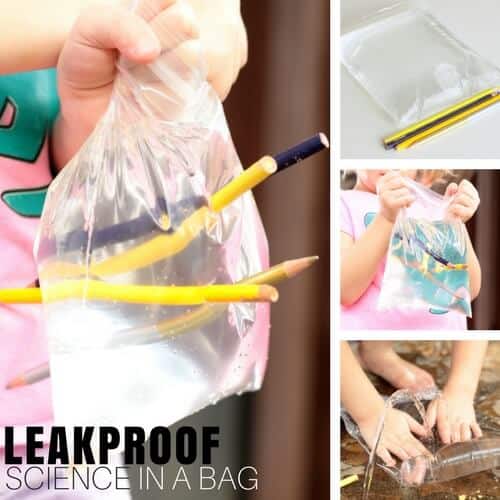
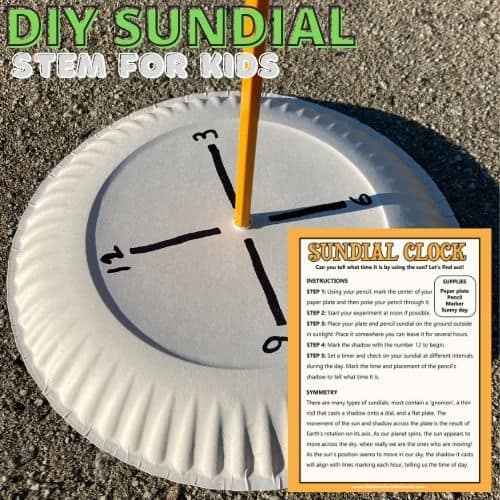


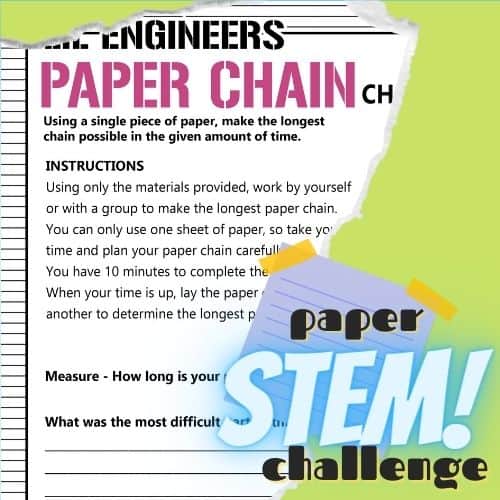
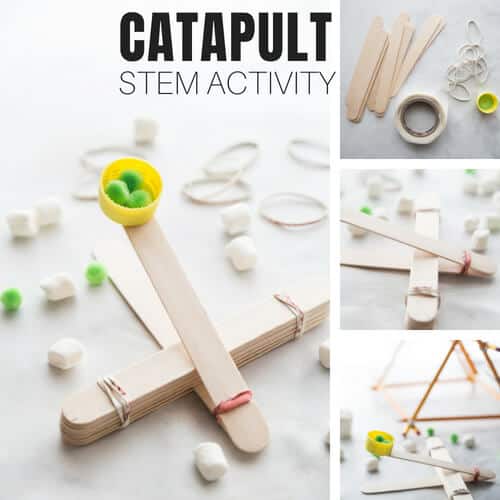
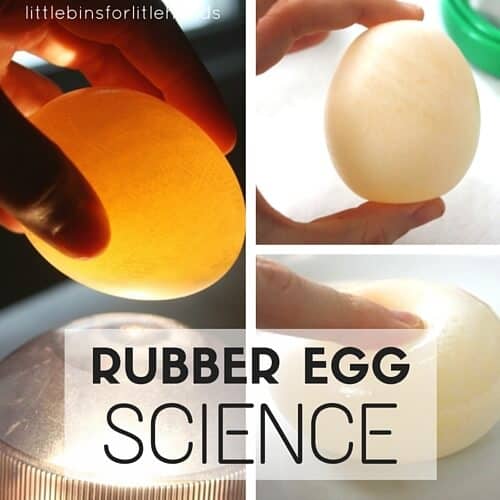


Thanks for the fabulous instructions. I ran a craft class today for 10 children aged about 9 – 13. They each made a catapult and then we sat around a huge circle (with dropcloths down), and fired painty cotton balls at sheets of paper in the middle. At the end each child took their catapult and their group-created artwork home. The class said it was the BEST class we have done to date (and it was super simple to organize).
Awesome to hear that! Catapults do make for a great take home projects. That sounds like an impressive art project making it truly a STEAM activity! Way to go!